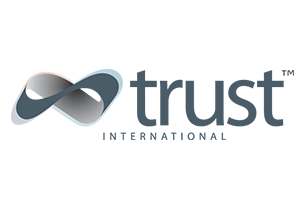It is early days for social media as a B2C tool. The scale of activity at the non-commercial level is however such that businesses cannot help but seek to tap into what may prove to be a lucrative flow. As always, low cost airlines tend to be the innovators in this area, but – perhaps in a sign of the changed times – many full service airlines have strongly bought into the Social Media sites too.
Today Twitter, Facebook, Flickr, YouTube and online blogs, offer largely unexplored new advertising and promotion platforms.
In principle, these sites enable airlines (and companies in general) to instantaneously and cheaply promote their product and brand, get the online community involved and motivated to travel, specifically target key market segments and develop brand loyalty to the carrier. It is also a way for carriers to promote word-of-mouth advertising, which is the single largest influencer when it comes to making travel decision, and, ultimately, boost revenue levels.
But much of the activity is experimental – and may be ephemeral. It can also be dangerous.
JetBlue and United Airlines using Twitter as a revenue-boosting business platform
In the US, JetBlue Airways and United Airlines have taken the Twitter phenomenon to the next level, introducing Twitter-exclusive promotions through the social networking site.
This strategy presents airlines with a new and innovative way to boost load factors, and hence the carriers’ bottom line, at the last minute, while rewarding their followers and boosting brand awareness.
It also (temporarily) differentiates JetBlue and United from the numerous other airlines, both LCCs and network carriers, who have established Twitter accounts of late. However, the majority of airlines are merely following the Twitter trend and have little more than press release information on their Twitter pages. In this respect they are not effectively using the site to its full potential.
‘Twares’ and ‘cheeps’ proving successful
The Twitter promotions, labelled “twares” by United and “cheeps” by JetBlue, are available for the airlines’ Twitter followers and those who sign up to receive the airlines´ updates via the site, and are usually available for a very limited period time, sometimes for as little as an hour or two.
JetBlue has established a new account, "JetBlueCheeps," that have posted deals each Monday morning since Jul-2009 covering the following two weekends, with the carrier recently offering a USD9 one way Burbank-Las Vegas fare.
According to JetBlue, “by promoting the Cheeps through Twitter, we give the already spontaneous audience of Twitter users a chance to grab great last-minute fares”.
United Airlines, meanwhile, offers “twares”, through its main Twitter account, with the carrier stating, "we try to surprise our customers once or twice a week by offering them special, Twitter-only fares".
The strategy – strike fast, strike low
The carrier, which started the programme in May-2009, added that “twares are all about surprising our customers with low fares for a very, very limited time. [They] sell extremely fast because the prices are unbeatable."
Both airlines have had some success with the programme, although the extent of the benefits is still largely unknown due to the newness of the programmes. The benefits are also expected to increase as Twitter matures and the functionality of the system improves. However, yield management can quickly be undermined – or changed irreversibly – if expectations of ultra-cheap last minute fare availability grows.
Facebook - opportunities exist with the world’s most used social network
Airlines are also embracing Facebook, the most used social network by worldwide monthly active users (there are currently more than 250 million registered users). Like Twitter, numerous carriers have Facebook profiles, but a few carriers stand out in the way they use the site to their advantage.
American Airlines and Virgin America using Facebook as an alternate booking platform
For example, American Airlines added a new "fare-finding" feature to its Travel Bag application within Facebook on 31-Jul-09, enabling Facebook users to find the lowest American Airlines fares for their desired trips using a real time search. If users then opt to book a trip, they are taken to AA.com to proceed with the booking.
The application also makes it easy for users to share travel experiences, reviews, comments and travel photos with friends and other Travel Bag users. Users are also able to personalise and plan up to three trips at one time. Potential passenger can name the trips, set the departure and return cities and dates, and share their trip searches with friends in their network. Each planned trip is stored automatically on Facebook until the user decides to delete it or the departure date passes.
This move also provides a host of opportunities for American Airlines to gain an insight into its customer base, with the carrier stating it is "seeking to differentiate and segment" its passengers and “trying to learn more about them, what their habits are, why they buy and when they buy."
Another carrier which has embraced Facebook and its ability as a tool to more effectively engage its customers is Virgin America. Through its Facebook page, passengers are able to click links to search flights and check flight statuses, but features Fan Videos, Customer reviews, Discussion Board, Company Information, and Information on the Elevate Loyalty Programme. It also has links to the carrier’s Twitter and YouTube Profiles.
Benefiting from the power of YouTube
Numerous carriers are also using the visual format of YouTube to their advantage.
Looking at Qantas as an example, the Qantas YouTube channel has seen over 45,500 channel views since its launch on 14-Feb-2006. Other stats include 3,526 views of its newly relaunched ‘I Still Call Australia Home’ Advert, in the first three days since its launch, and 87,152 views for its ‘Painting of the first Qantas A380’ video.
Air New Zealand ads become a YouTube success
Air New Zealand’s Jul-2009 ‘Bare essentials of safety from Air New Zealand’ and ‘Nothing to Hide’ videos have also highlighted the power of YouTube.
The ‘Nothing to Hide’ TV commercial, which features eight body-painted Air New Zealanders including CEO, Rob Fyfe, was designed to highlight the transparency of Air New Zealand´s all-inclusive domestic airfares, with the message that, unlike competitor airlines, what you see is what you get. It has had over 3.8 million views on YouTube since it was launched on 10-May-09.
The safety video, which has been seen over 4.6 million times on YouTube, has body-painted cabin crew and pilots delivering the in-flight safety briefing to customers travelling on B737 domestic jet services. The video was the third most viewed video globally on YouTube in the week of its launch, and was the most viewed New Zealand travel video of all time on YouTube, surpassing the ‘Nothing to Hide television’ commercial which placed in second place.
Air New Zealand General Manager Marketing, Steve Bayliss, stated the “genuine, fun and engaging approach taken by Air New Zealand to its in-flight safety briefing had clearly resonated with both customers and media”, with the carrier “absolutely stunned by the massive international interest in our in-flight safety briefing”.
JetBlue uses Flickr
Flickr, a photo sharing community, is another Social Media stream used by carriers. JetBlue is again actively involved in this medium, and currently has 3,400 items, including photos and videos.
Members of the JetBlue Flickr group can comment on each others’ photos and can add each other as friends, with members including customers and employees of JetBlue. The JetBlue Flickr Group also has an active discussion board, enabling members to ask questions, give opinions and offer suggestions to other members.
Southwest leading the blogging trend
A number of airlines are also embracing the blog, with Southwest probably the best example of a carrier effectively using this format, with its ‘Nuts about Southwest’ blog, which was started two years ago and has recently been revised.
The blog is regularly updated and features discussions on a range of topics, with CEO, Gary Kelly, having a regular featured blog. The blog also features podcasts, the carrier’s latest News, polls, Video Blogs and Flickr Group pictures, among other regular features.
Southwest Manager Online Relationships & Special Projects, Brian Lusk, stated the blog has "played an important role in corporate decisions", from changes in Southwest´s seating procedure to when it opens its inventory for reservations. The blog involves approximately 30 Southwest employees and gets above 60,000 unique visitors per month.
The site has also played an important role in the carrier’s ability to react to negative publicity events, including its Mar-2008 safety hiccup.
Targeted network sites provide access to key market segments
A number of carriers are also using network sites to specifically target and develop key market segments. One natural approach is to target younger age categories, with disposable income and whose usage of the media is broadest.
Examples include, but are not limited to:
AirTran: AirTran reaches college students by positing videos on collegehumor.com. The LCC has also set up airtranu.com, a website aimed at college students which offers students between 18 and 22 years of age with standby flights for USD68 for short haul and USD99 for long haul segments. The carrier stated it has had success in reaching this target audience through this sort of viral marketing.
Lufthansa: Lufthansa has also launched ‘GenFlyLounge.com’, a social networking site designed specially for students, with the carrier recognising the importance of social networking sites for the younger generations.
The site is a dedicated airline-sponsored social network for college students and offers enrolled student-members to compare notes on travel experiences and destinations and buy discounted student airfares on Lufthansa.
Describing the site, Lufthansa stated GenFlyLounge.com enables students to “Network, meet and connect with students who love to travel internationally.
Then there is the opportunity for the airline’s site to be a B2B meeting point on non-travel matters:
KLM: KLM has developed several of its own social networks, including KLM Club China and KLM Club Africa, which are virtual business communities offering passenger an “instant business network, where you can meet valuable contacts and share your experiences”. KLM describes the Clubs as follows:
KLM Club China: “KLM Club China is the first in a range of exclusive business communities. A virtual club bringing you into contact with others doing business in and with China. The heart of Club China is the online platform. Here you can, for instance, create your own business network. Enabling you to attain valuable contacts, share your experience and learn from other experiences”.
KLM Club Africa: “We are pleased to announce Club Africa, a new form of business community for business travelers with one aim in common: to successfully conduct business in and with Africa. Club Africa is essentially an instant business network in Africa. It will enable you to attain valuable contacts quickly and easily, and find mutual inspiration with new ideas and business proposals”.
KLM also has Flying Blue Golf, which allows golfers to comment on their golf scores and courses they have played, use KLM frequent flyer points to buy golfing equipment and book golfing trips on KLM.
Another functional type is more directly travel related and designed more directly to encourage ticket sales:
Virgin Atlantic: Virgin Atlantic launched ‘Vtravelled’ on 23-Jun-09, a dedicated travel portal which aims to tap into the `inspirational´ travel market and allows visitors to organise and share their travel plans.
SAS: Another carrier using social networking sites to attract specific target markets is Scandinavian Airlines, which established a website dedicated to the gay, lesbian, bisexual and transgender/transsexual community, aimed at attracting this high-income demographic group.
On the site, the airline´s gay staff provide tips on the best restaurants, venues and events in Stockholm and Copenhagen. The carrier has also partnered with several organisations and publishers so the site can offer gay maps, gay guides and an events calendar that is updated daily for both cities. Although this site has yet to become truly a social network, the potential for such websites is huge.
eBay auctions gather interest
JetBlue, in Sep-2008, also used eBay to its benefit, with the LCC auctioning more than 300 return services and six vacation packages on eBay, with opening bids of USD0.05 and USD0.10. Despite the low starting price, in most cases the final price was around the same price as the actual website price. However, in many cases, eBay buyers paid considerably more than the publicly advertised prices!
The auction not only provided another sales platform for the LCC, but produced valuable word-of-mouth advertising for the LCC, with the auction gathering interest from a large number of bidders and watchers.
Jumping on the iPhone bandwagon
Although not actually a form of social networking, a new and increasingly popular phenomenon of late relates to the iPhone application.
Air Canada in mid-Aug-2009 launched an Apple iPhone/iTouch application allowing travellers to retrieve electronic boarding passes, track flight information in real-time, receive notification of itinerary changes and obtain other details about the carrier´s services.
Other carriers with iPhone applications include easyJet, Qantas, American Airlines and Delta Air Lines.
..but not always a good thing
However, there are negatives with external social networking, considering the public nature and significant online presence of these formats.
An example of this occurred at the end of 2008, when Virgin Atlantic fired 13 flight attendants for criticising the airline’s flight safety standards and describing its passengers as “chavs” on Facebook.
At the time, the carrier stated, “there is a time and a place for Facebook. But there is no justification for it to be used as a sounding board for staff of any company to criticise the very passengers who pay their salaries.”
British Airways had a similar problem, with several employees describing some passengers as “smelly” and “annoying” in Facebook postings, an example of another Facebook public relations negative.
It also highlights a need for internal awareness and communication by airline management on the importance of these new forms of media.
Passengers are also increasingly expressing their anger, predominantly related to flight delays and customer services, on social networking sites, which provides passengers with a more immediate and broad audience to express their frustrations, rather than the previous available option – the post flight complaint email or letter. And, it is usually frustrated passengers, rather than happy passengers, who use these sites.
So, airlines also need to be able to manage the potential negativity which may arise from some of the content posted on these sites, whether it is from jaded passengers and/or staff. Importantly, by entering into unedited social media space, the airline loses a degree of control of the PR message that is produced.
Only starting to see the benefits – and the pitfalls
Through well developed social networking sites, airlines are able to communicate on a more personal level with potential and existing customers. However, as yet, the full potential of these sites has not been developed – and may in fact prove to be much overstated, or alternatively, have the power to transform some marketing strategies. Most probably, as the media evolves, airlines will come to understand how to integrate its usage into wider marketing and sales strategies.
For social media marketing approaches to be truly effective, they need to be clearly and effectively aligned with the carrier’s business strategy, rather than being seen merely as a trend or a gimmick. Only when this is done can carriers realise the revenue potential from these sites.
There is also scope for these sites to be used in a much more effective manner as a customer service tool, with these platform actually able to help counteract negative publicity (rather than being a forum creating such publicity), although this has not, as yet, been developed.
But, once airlines enter into these new, uncontrolled and experimental areas, there needs to be a recognition that the company:public interface becomes a whole different environment – and one over which the airline has only very limited control.




